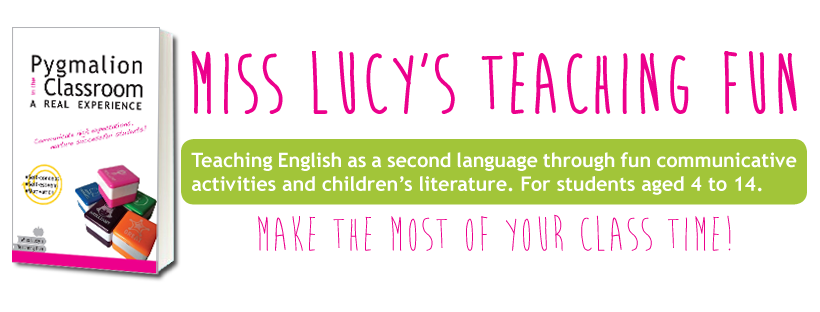Here in Spain, Science as a subject taught in English has been recently introduced and it is compulsory for those students who attend bilingual schools.
The collection Pinch of Salt published by Anaya is a little bit different from the text books I usually see around.
Scientific phenomena such as reflection and refraction of light, landscape transformation, energy sources and the circulatory system are explained through story which are narrated by several characters through their adventures and discoveries.
The stories are illustrated and really creative. They are adapted to the English curriculum, so the grammar and the vocabulary will be specific for a school year which is also suggested on the books' cover.
They are also perfect for a shared project: the English teacher could deal with the linguistic part of the reading while the science teacher could focus on the scientific part.
Each book comes with a CD and at the end of the story there are 'work cards' with experiments, questions and all sort of activities that will awake your students' curiosity about the world that surrounds them.
At the moment you can purchase 4 titles and their respective teacher's books:
The Heart Cave: A "pirate school" ship takes the reader into a cave which seems to work like a human heart. Following the crew your students will discover what its secrets are and why it can produce so many precious stones!
The Rock Eating Monster: A Sc-Fi story whose protagonist is Lucas, a space superhero, who is captured by a very bad wizard, Noir. To get free, Lucas will have to discover what has happened to the landscape around him while he was asleep because of a curse Noir has put on him.
The Steam Castle: There's a magical kingdom, Occam, where a princess, Enid, wants to convert her castle into a mobile one. To achieve her purpose she will have to travel to the world of humans to meet the former wizard of Occam who, in the meantime has become a scientist. Will they be able to create the energy sources they need to transform Enid's castle?
The Rainbow Party: Enid from Occam is preparing a birthday party for her father, the King. She wants to use the light and all its natural special effects to amuse him but once again she will need some help from humans and their science.
Personally I think that these books are definitely at a higher level compared to the science books used in the Spanish bilingual school system. However, the narrative style is quite far away from Roald Dahl's and the fact that scientific explanations are concentrated in a few pages sometimes creates the same state of confusion as a traditional science book. In any case, this is natural when you consider the complexity of the topics treated in the books.
I've personally never been able to remember a physics definition or formula for more than a few days because of this density of concepts--when I was in school I found it difficult to remember the mathematical side of science for the same reasons.
But the work cards will certainly help. Students will be able to experiment and make their own predictions and observations of any statement presented, adding practical experience to the theoretical one.
And that's exactly what science is for and why I definitely love it!
This collection will be a good choice if you aren't satisfied with the current method of teaching this subject, that most of the time requires just learning by heart, when you'd like your students to experience how science really works, through active thinking and learning.
Also Available in Spanish.




